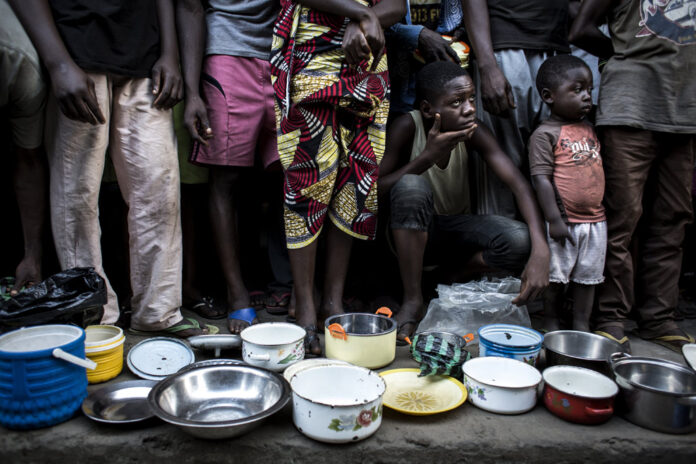In the Democratic Republic of the Congo (DRC), approximately 25.6 million people, or 22% of the country’s population, are grappling with severe food insecurity due to ongoing conflicts and competition for scarce resources. This stark reality, highlighted in the latest analysis by the Integrated Food Security Phase Classification (IPC), underscores a humanitarian crisis with urgent implications. Among these millions, around 3.1 million individuals are facing “crisis” or “emergency” hunger levels (IPC Phase 4), leaving them on the brink of famine. Forecasts indicate that if immediate action isn’t taken, this crisis is set to worsen, leaving more lives at risk through early 2025.
Armed Conflict and Resource Scarcity: Nutrition Under Siege
According to Rein Paulsen, Director of the FAO’s Office of Emergencies and Resilience, the roots of this crisis run deep, with conflicts and fierce competition over resources dismantling essential livelihoods and compromising rural food systems. This devastation is especially concentrated in the eastern regions of DRC, where violent clashes and displacement have disrupted the agricultural backbone of rural communities. Without the ability to grow food or sustain livestock, millions have been left vulnerable, with their food security at the mercy of unpredictable access and spiraling prices. Paulsen has warned that even minor disruptions, such as poor harvests or price hikes, could drive millions more into severe food shortages.
The sheer scale of this food crisis reflects both immediate and long-term ramifications: families are unable to secure daily nutrition, which compounds health issues and, in particular, increases malnutrition risks among children, pregnant women, and the elderly. With already scarce resources, households are being forced to adopt strategies that compromise nutrition quality and quantity, leaving the population even more susceptible to the effects of prolonged hunger.

Crisis in Agricultural Production: Hard Hit to Farming and Livestock
Data from FAO’s Data in Emergencies (DIEM) report paints a bleak picture for agriculture and livestock, two pillars of sustenance for DRC’s rural populations. Nearly 35% of farming households in the region have reduced the amount of land they cultivate, primarily due to security threats. Many farmers have been forced to abandon fields altogether, leading to significant declines in food availability and raising the risk of starvation. The reduction in cultivable land has meant that even stable crops are no longer able to meet local demand, driving up food prices and deepening the crisis.
Additionally, 25% of livestock keepers report having lost animals, further diminishing food availability. These losses not only impact local nutrition but also strip rural families of income, leaving them unable to purchase basic necessities. These challenges have sparked a vicious cycle of poverty, as individuals who might otherwise rely on subsistence farming or livestock for survival are now facing debilitating food shortages and an uncertain future.
International organizations such as the FAO and WFP have mobilized resources to mitigate the immediate risks of starvation, yet the scale of the crisis suggests that a collaborative global effort is necessary. For those on the ground, the loss of basic agricultural inputs—seeds, tools, livestock—and the fear of violence prevent any sustainable solution from taking root.

Path to Recovery: Building Resilience and Reversing Trends
Addressing this crisis requires a two-pronged approach: urgent food aid to counter immediate starvation threats and a longer-term strategy to restore and sustain food production. Paulsen emphasizes that breaking the cycle of hunger will require conflict resolution, security for agricultural lands, and structural investment in rural economies. He advocates for targeted support, such as improved access to farming essentials like seeds, tools, and technical support, which will empower families to regain independence. Paulsen also stresses the need for peace-building and conflict resolution, as lasting food security depends on the ability of communities to access land and resources without fear.
Equipping rural families with tools to improve productivity and ensuring fair access to food storage facilities, stable markets, and land rights are crucial steps forward. Beyond immediate food relief, programs that specifically target nutrition deficiencies among children and vulnerable populations will be essential to stave off the long-term health impacts of this crisis. International efforts should focus on not only immediate food distribution but also fostering resilience in DRC’s farming sector, with the goal of reducing the population’s reliance on emergency relief.
Implications for the Future
As international aid efforts continue, the gravity of the crisis in DRC serves as a reminder of the inseparability of food security and peace. Without addressing the root causes—namely armed conflict and inequitable resource distribution—the cycle of hunger and poverty will persist, threatening the future stability of the DRC and placing millions more at risk. The international community’s involvement in supporting peace efforts and bolstering agricultural resilience is paramount to reversing these grim trends, ultimately providing a lifeline for a population in dire need.

